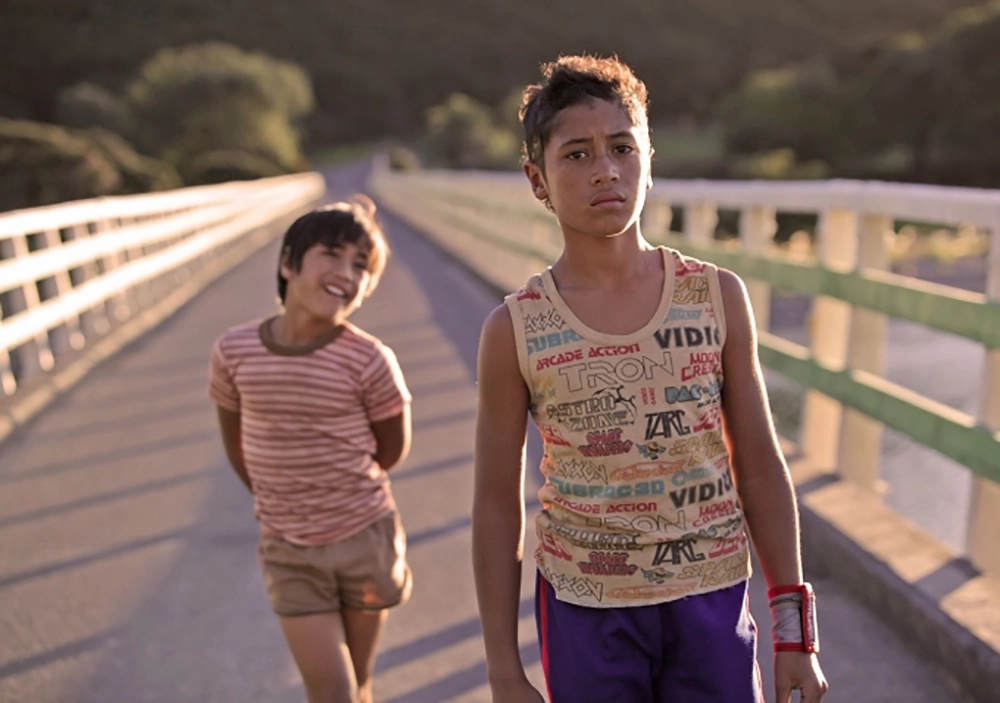You can choose to love or hate Taika Waititi, but there is honestly no way to ignore the ability of this immensely talented Māori filmmaker, storyteller, actor and producer. He infuses an unhealthy amount of charm, innocence, authenticity, and depth into his dialogues, and characterisations, plus an unapologetic amount of camp and theatrics when it comes to staging or framing even a violent fight scene. (Think, the literal dance battle in the coming-of-age “Boy” or the extravagant guns a-blazing climax of his Oscar- winning satire “Jojo Rabbit” with Sam Rockwell rocking the hell out of a cape!).
Waititi’s has an affinity for nuanced characterisation (read: transforming characters who are absolute wankers into extremely lovable wankers with complex and traumatic backstories… barring “Jojo’s” Hitler, of course) and for churning out bittersweet storylines. He ability to beautifully blend harsh realities with mesmerizing but absurdist fantasy is highly evident in almost all his filmography.
Shedding Light on Waititi’s Impressive Career
This is through his unique work as an independent filmmaker, where he can exercise his creative freedoms to the fullest, or even more recently in his contributions as a producer on various OTT platforms. This is seen through his resplendently beautiful, yet bittersweet and inclusive content such as HBO Max’s “Our Flag Means Death,” a show that boldly strikes down heteronormativity and cemented Waititi’s status as a gay icon. Additionally, it can be seen in “Reservation Dogs,” a critically-acclaimed Hulu series he co-created with fellow indigenous filmmaker Sterlin Harjo that focuses on the simplicity of life on reservation land, and the indigenous American youth and their own American dreams.
Personally, an aspect that’s made me an ardent fan of Waititi is the manner in which he dissects problematic mindsets/norms that prevail in society such as toxic masculinity. He does this via a winning combination of earnestness, originality, and his signature wry, witty and subtly dark humour that harkens back to his time as a seasoned improv comic on the New Zealand comedy circuit. Quite a lot of his work also pays homage to his Māori heritage — to the slang within the community and to his humble small town roots, which I find endearing, educating, relatable, and which conveys his close personal connection to his material. And of course, let’s not forget this man won a Grammy for ‘Best Compilation Soundtrack Album for Visual Media’ (I only found out about this a week ago), so he’s got absolutely immaculate taste in music too.
This list will primarily shed light on some of Waititi’s early ventures and his most underrated contributions to independent cinema that might have flown under the radar. It will also include one ‘so-bad-it’s-good’ short film that also made the cut.
1. ‘Boy’ (2010)

Alamein, a cannabis aficionado and self-proclaimed gang leader returns home, much to the delight of his young sons, Boy and Rocky, who look up to him and definitely want to make him proud.
This was Waititi’s second feature film, based on his estrangement from his own father. It is an impressive movie that explores the intense toll false promises can take on the mental health of a child who thinks the world of their parent, especially a parent who is a personification of the phrase ‘trust issues.’ It also amplifies the need for parents to set a better example for their child while highlighting a grown up’s role in shaping and moulding future generations.
Waititi’s usage of foreshadowing to address a grim reality which is evident in his later career too (an example of which can be viewed in the infamous ‘shoes scene’ in “Jojo Rabbit”) is especially heavily noticeable in “Boy” as well. We see scenes such as the titular character erasing his father from his formerly cherished and nostalgia-inducing memories of childhood once the gravity of Alamein’s absence and recklessness as a parent finally dawns upon the youngster.
A Good Use of Foreshadowing and Parallels Predicting Waititi’s Later Work
If you’re particularly attentive, parallels to “Jojo Rabbit” can even be witnessed in the form of visual motifs and characterisation — even though both movies are set a decade apart. Both films also feature young and naive protagonists who’ve hyped up an ultimately disappointing individual as a heroic figure in their minds through the power of a heightened imagination. The themes in the string budget “Boy” also mirror its bigger budget successor, which only further proves that Waititi showed potential as a storyteller long before bigger things came his way. And much like “Jojo Rabbit,” “Boy” also ends with a groovy dance sequence from the ensemble cast that’s dedicated to Michael Jackson (the subject of the titular character’s obsession). It incorporates choreography from the ceremonial Māori war dance known as ‘Haka.’
As a performer, Waititi brings a detestable and buffoonish quality to Alamein, a character with whom I share a love-hate relationship for. He is simultaneously goofy and effortlessly intense when the occasion calls for it. He also shares an enriching camaraderie with James Rolleston, who turns in a very promising performance as the titular Boy.
On a sadder note, those kids are probably going to grow up with some real trust issues and are legit going to need so much therapy after putting up with Alamein’s irresponsible antics, I swear.